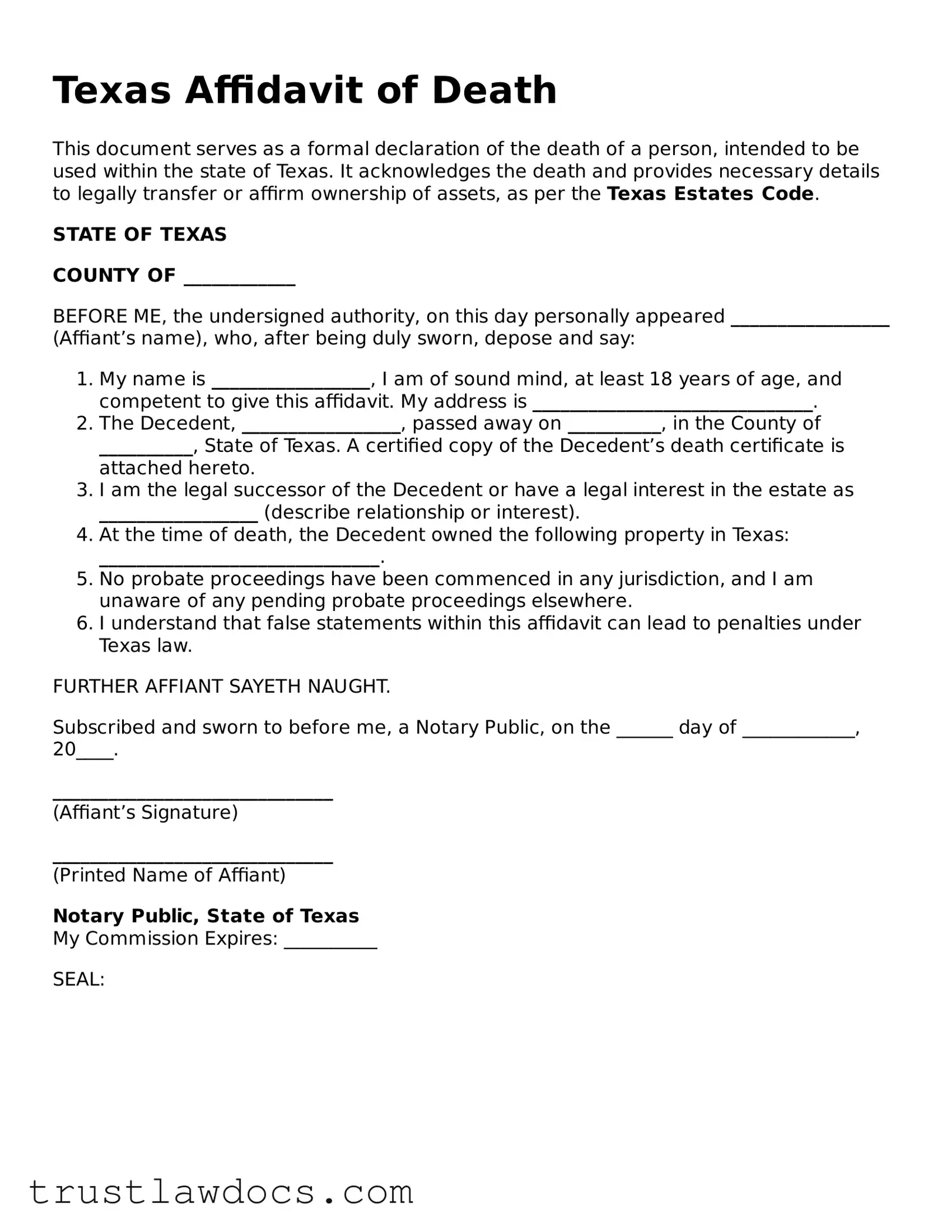What is a Texas Affidavit of Death form?
An Affidavit of Death form in Texas is a legal document used to formally declare the death of an individual. It helps in the process of transferring assets to heirs or beneficiaries, particularly when the deceased person owned property in Texas. This affidavit serves as an official statement that can be recorded with county records to clarify the chain of title.
Who needs to file an Affidavit of Death in Texas?
Typically, the executor of the estate or the surviving heirs might need to file an Affidavit of Death. This is especially important if the deceased owned real estate or other significant assets that need to be legally transferred to the rightful heirs or beneficiaries.
What information is required on the Texas Affidavit of Death form?
The form requires detailed information including the full name of the deceased, their date of death, and the legal description of the property involved. It might also require the affiant's relationship to the deceased and their knowledge of the estate's handling.
Do I need a lawyer to complete the Texas Affidavit of Death form?
While not strictly necessary, consulting with a legal professional can be helpful in ensuring that the affidavit is completed correctly and in accordance with Texas law. This can be particularly important if the estate's affairs are complex.
Where do I file the Texas Affidavit of Death?
The completed affidavit should be filed with the county clerk’s office in the county where the property of the deceased is located. This action legally updates the property records to reflect the death.
Is there a filing fee for the Texas Affidavit of Death form?
Yes, there is typically a filing fee required when submitting the affidavit to the county clerk’s office. The amount can vary by county, so it's advisable to check with the specific office where you plan to file the document.
How long does it take for the Affidavit of Death to be processed in Texas?
The processing time can vary by county and depending on the specific circumstances. However, once filed, the document becomes a part of public record relatively quickly. It's best to contact the county clerk's office for an estimated timeframe.
Can the Texas Affidavit of Death form be used to transfer vehicle titles?
Yes, in some cases, it can be used to assist in transferring the title of a deceased person’s vehicle to their heirs or beneficiaries. However, additional documents might be required by the Texas Department of Motor Vehicles.
What happens if the Affidavit of Death is filled out incorrectly?
If errors are found in the affidavit, it might not be accepted for filing or could be challenged later, potentially complicating the estate process. If inaccuracies are identified after filing, it may be necessary to submit a corrected affidavit. For these reasons, accuracy and completeness are crucial.
